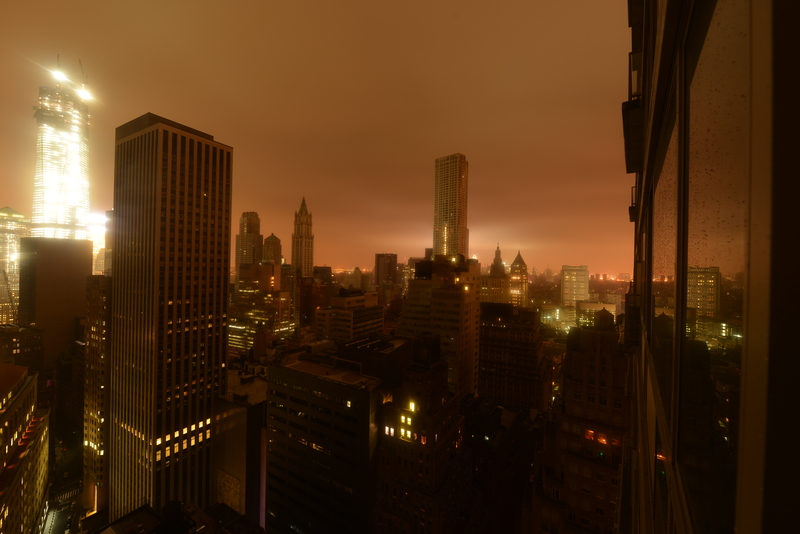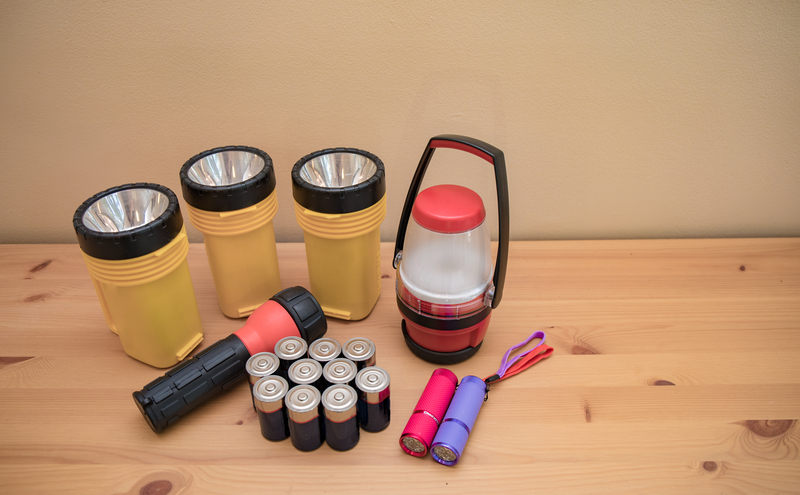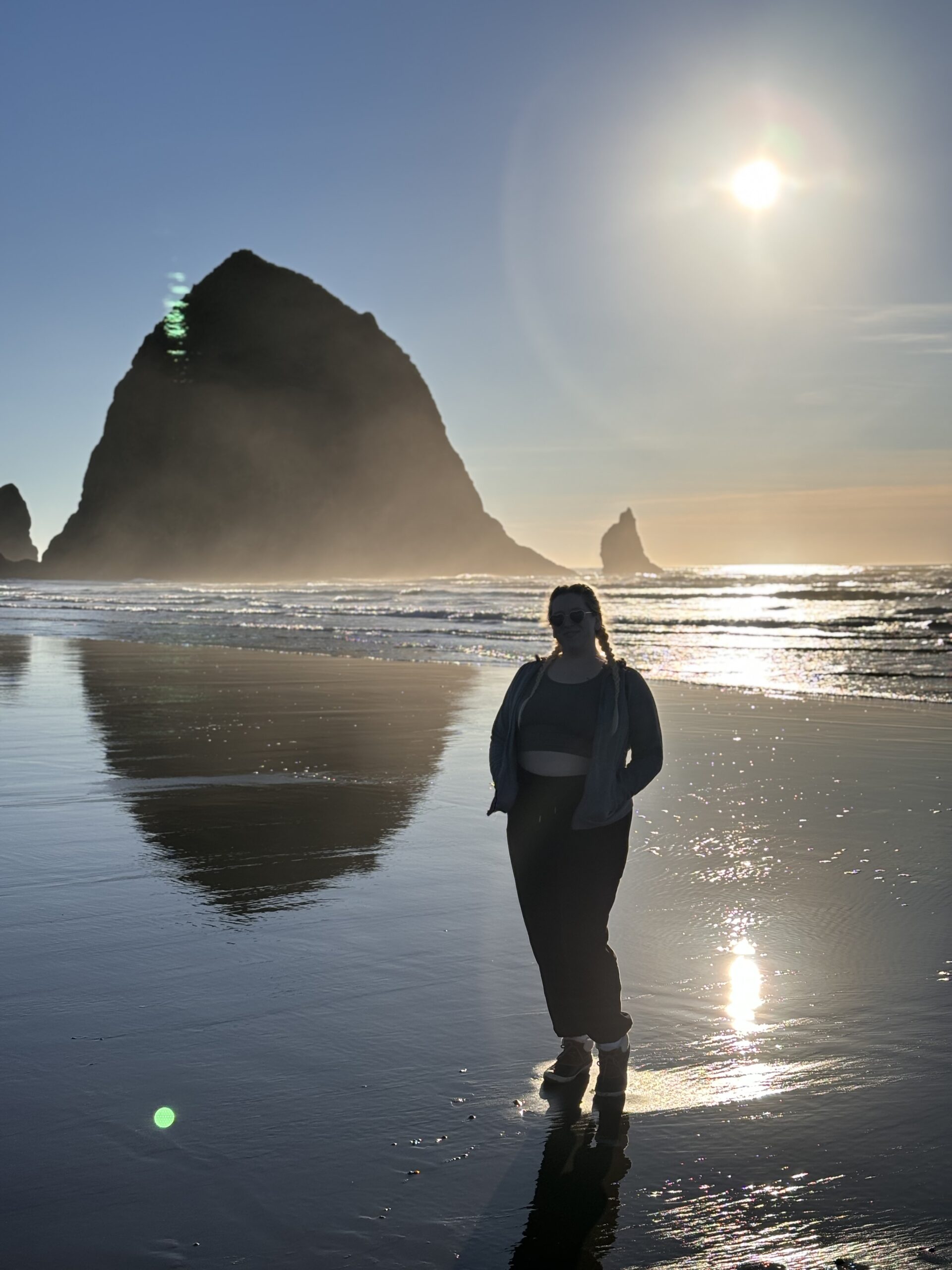Your Power Outage Emergency Checklist

We’ve all been there during severe weather events when the lights flicker and you hope that a power outage doesn’t happen. When it does, it can be for hours or even sometimes days. We’ve seen with snowstorms, hurricanes, and other severe events how important it is to be prepared to not have electricity for a few days. Preparation is key to navigating a power outage without undue stress. Here’s what to gather to ensure you’re ready:
Power Outage Emergency Kit
A well-stocked power outage kit is your first line of defense. It should include:
- Flashlights and extra batteries: Vital for navigation and tasks within your darkened home.
- Portable power banks: To keep your mobile devices charged and maintain communication with the outside world.
- First aid kit: Equipped to handle minor injuries that might occur in the dark.
- Non-perishable food and water: Foods to buy before a power outage include canned goods, dry snacks, and bottled water—enough for several days.
- Warm clothing and blankets: Especially crucial in a winter power outage survival kit.
- Essential medication: A week’s supply of any prescription medicines you or your family members need.
What do I need for a power outage?
In addition to the basics, consider these emergency supplies for a power outage:
- Coolers and ice: To keep perishable food safe during extended outages.
- Battery-powered or hand-crank radio: Keeps you informed of news and emergency broadcasts.
- Sanitation supplies: Including wet wipes, hand sanitizer, and trash bags.
I’ve lived in three different types of climate, one of them being Florida, and we were always prepared for hurricanes, which evidently happened every year. The most important item we found to stock up on was water. You never know how much you need it until you no longer have it!
Pro Tip: Pack yourself some board games, books or other entertainment options that don’t require power. It can be a long time before power comes on and you’ll need to entertain yourself during that time!
Related post: Power Surge vs Power Outage : What’s the Difference?
What Should I Do During a Power Outage?

When the lights go out, here’s how to keep safe and comfortable:
- Assess the situation: Determine whether the outage is limited to your home or is more widespread.
- Notify your utility company: If the outage isn’t already reported.
- Keep refrigerators and freezers shut: To preserve food. An unopened fridge will keep food cold for about 4 hours; a full freezer, for about 48 hours.
- Use generators safely: Never operate a generator inside or connect it directly to your home’s wiring.
- Stay informed: Use a battery-powered radio to receive updates.
How do I prepare for a power outage?
Power outages can happen unexpectedly, especially if you live in an old building. There is nothing worse than being stuck in the dark and being unprepared.
Preparing for a power outage means thinking ahead:
- Insulate your home: Keeps it warmer in winter and cooler in summer, mitigating the effects of a power loss.
- Create an emergency contact list: Include utility providers, medical facilities, and close family members.
- Learn manual overrides: For electronic systems in your home, such as garage doors.
How do I prepare my home for a power outage in winter?
Insulate pipes to prevent freezing, have extra blankets and warm clothing available, and consider a non-electric heat source like a wood stove or fireplace.
Being prepared with a comprehensive power outage emergency kit and knowing how to react when the lights go out can significantly reduce the stress and discomfort of a blackout. Remember, it’s not just about having the right emergency power supplies but also about how you use them. By following these steps and ensuring you have the essentials for a power outage at hand, you can protect your home and family during these challenging times. So, before the next storm hits or the next grid failure occurs, take some time to prepare. It’s an investment in peace of mind that will pay dividends when you least expect it but need it most.
Related post: What is a Power Surge?
Power Outage Emergency Kit FAQ

Q: How long do most power outages last?
A: Most power outages are short-lived and last a few hours. However, severe weather events or significant system failures can result in outages that last for days.
Q: What are the first things I should do in a power outage?
A: First, check if the outage is just in your home or if your neighbors are affected too. If it’s widespread, report it to your utility provider. Then, use flashlights instead of candles to reduce fire risk, and keep fridge and freezer doors closed to preserve food.
Q: How can I keep my phone charged during a prolonged power outage?
A: Keep portable power banks charged and ready. Consider investing in a solar-powered charger for extended outages.
Q: Is it safe to use a generator during a power outage?
A: Yes, but always operate generators outdoors and away from windows to avoid carbon monoxide poisoning. Never connect a generator directly to your home’s electrical system unless it’s through a professionally installed transfer switch.
Q: How should I store water for a power outage?
A: Store at least one gallon of water per person per day. Keep it in a cool, dark place and replace it every six months.
Q: What food should I have in my emergency kit?
A: Stock up on non-perishable food that doesn’t require cooking, such as canned goods, granola bars, and dried fruits. Check and refresh your supplies every six months.
Q: Can I still use my gas stove during a power outage?
A: Yes, most gas stoves can be lit with a match or lighter when the power is out. However, use caution and ensure your kitchen is well-ventilated to avoid gas buildup.
Q10: What emergency contact information should I have on hand? A10: Keep a list of contacts for local utilities, medical facilities, family members, and friends. Also, know the location and contact information for your nearest emergency shelter.
Do you Need Cheaper Electricity?
If you’ve taken the time to understand the information on your bill and discovered you’re paying more than you’d like for your electricity, have you looked around for a cheaper deal? The Energy Professor has a wealth of information on ways to save on your utilities, including details of top deals that could significantly reduce your monthly or quarterly electricity bills.
We hope you found this article helpful! If you are looking for ways to increase energy efficiency and sustainability in your home be sure to take a look at all of the latest renewable energy options in your area. The Energy Professor helps residential and small business owners find qualified energy suppliers in New York, New Jersey, Pennsylvania, Texas, Ohio, Maryland, Illinois, and Massachusetts.




